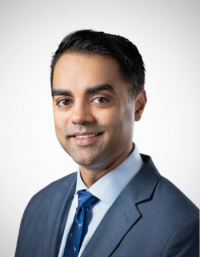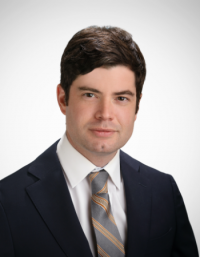Arthritis is the loss of cartilage in the joint. This cartilage normally cushions the joint and provides a low-friction environment with minimal friction. In severe cases, the cartilage loss becomes extensive leading to painful rubbing of the joint (“bone on bone” arthritis). This can be a very debilitating and progressive disease. Selective use of cortisone injections with stretching exercises can be useful in early stages of arthritis. Dr. Iyengar uses ultrasound-guided injection technique to maximize the effect of cortisone injection therapy. When preservation of the joint is possible, Dr. Iyengar uses state-of-the-art arthroscopic techniques for restoration of shoulder cartilage. Surgery for advanced shoulder arthritis typically involves either a total shoulder replacement or a reverse shoulder replacement. Dr. Iyengar is one of the few surgeons in Northern California who performs computer navigated GPS shoulder replacement surgery.
Rotator Cuff Tears
The shoulder is surrounded by four rotator cuff muscles. These muscles are responsible for shoulder strength and range of motion. When the rotator cuff is torn, patients may experience significant pain and/or weakness with movement. Typically, overhead activities may become painful or impossible to perform. There are many different types of rotator cuff tears, and an accurate diagnosis is essential. Smaller (partial) tears may be treated with a course of physical therapy and/or PRP injections. For larger (complete) tears surgery is often necessary. Dr. Iyengar uses minimally-invasive arthroscopic techniques to repair rotator cuff tears to optimize healing and speed up recovery.
Shoulder Instability/Labral Tears
The shoulder joint has the largest range of motion in the body. Subsequently, this extensive motion puts the shoulder at risk of instability. Instability may be a subtle occurrence (subluxation) or a more obvious, traumatic experience (dislocation). The degree of instability usually depends on multiple factors such as the severity of injury, individual patient anatomy, and level of activity. Some patients with instability (especially individuals that are not active in overhead activities) can be managed without surgery with physical therapy. However, if a patient experiences symptoms of recurrent instability, surgery is often necessary. Dr. Iyengar performs instability repair using arthroscopic minimally-invasive techniques to repair the torn soft tissues. He has extensive expertise in advanced reconstruction techniques, including arthroscopic remplissage, in cases of severe or recurrent instability.
Frozen Shoulder (Adhesive Capsulitis)
The shoulder is enclosed in a thin fibrous tissue known as a capsule that normally allows for a wide range of motion. In certain instances this capsule become thickened, scarred and inflamed. This is known as a frozen shoulder (“adhesive capsulitis”). The diagnosis can be made based on a careful history and physical exam. Over 80% of people with frozen shoulder can be successfully treated without surgery. Through his research, Dr. Iyengar has developed a comprehensive treatment protocol for frozen shoulder. This typically consists of cortisone injections using precision ultrasound-guidance to ensure accurate placement in the shoulder capsule. Additional physical therapy can also help to alleviate pain and improve shoulder motion. In cases where no improvement is noted within 3 months of diagnosis, surgery is often recommended. Dr. Iyengar uses minimally invasive arthroscopic technique to remove the scarred capsule and restore range-of-motion to the shoulder.



